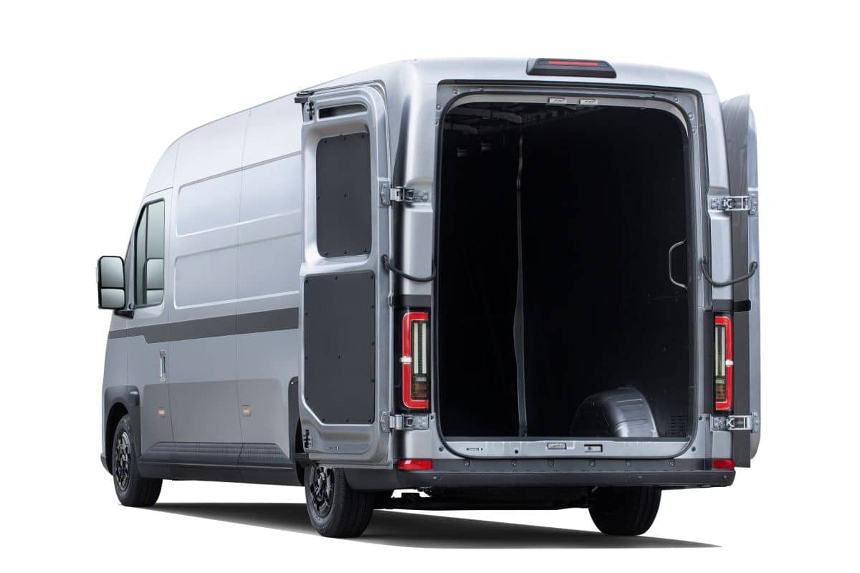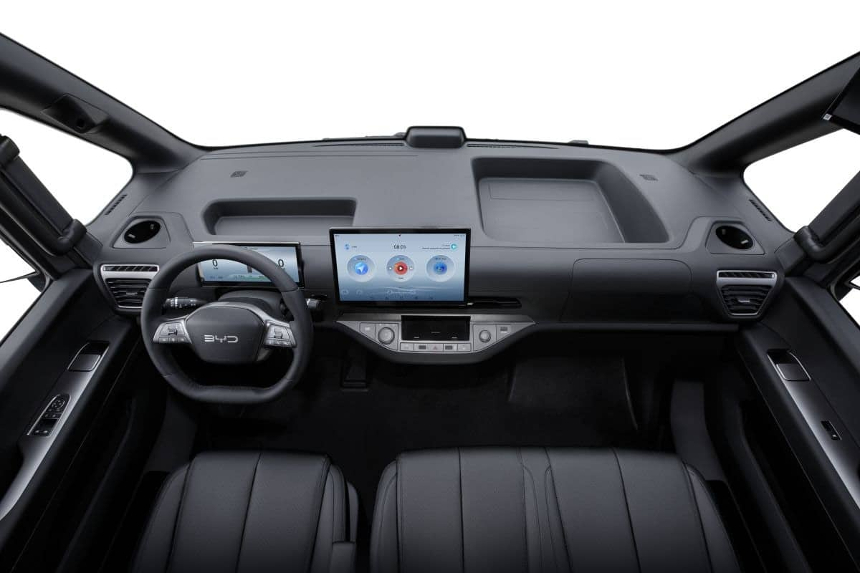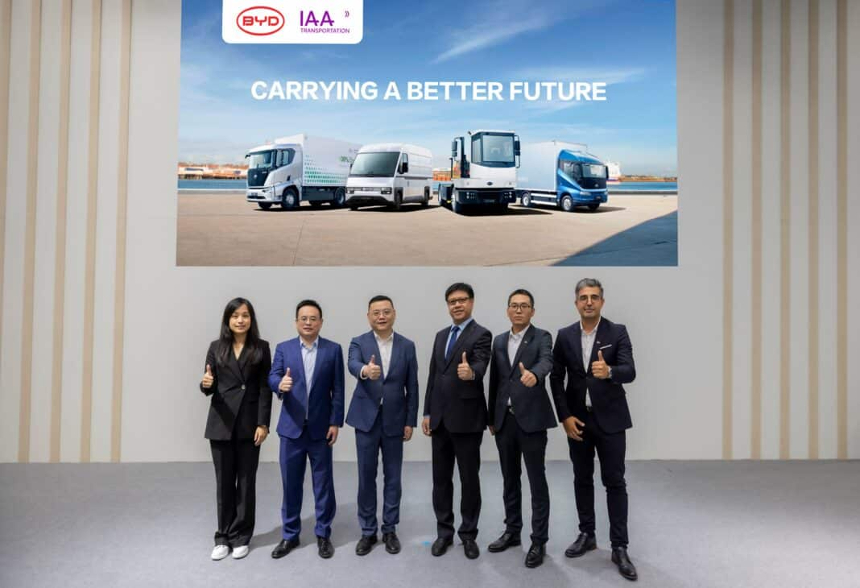Sign up for daily news updates from CleanTechnica on email. Or follow us on Google News!
A decade ago, Tesla was the electric car company that was leading the world forward into the battery powered future. Today, it has ceded its leadership role to BYD. Where Tesla has failed to introduce new mass market vehicles — it has two, the Model 3 and the Model Y — BYD has dozens. It manufactures a wide range of passenger cars, some of which sell for under $10,000 in China, but it also builds electric buses and commercial trucks for everything from tractor trailers to ambulances, street sweepers, and trash trucks. It also builds electric delivery vans to serve the needs of tradespeople, grocery stores, and anyone else who needs “last mile” trucks that bring stuff from distribution centers and deliver it to end uses.
This week at the IAA Transportation 2024 show in Hanover, Germany BYD is introducing the E-Vali, an battery powered electric delivery vans designed to meet the needs of European customers. One delivery van looks very much like every other delivery vans — a box on wheels. The issue is not style but efficiency. How quickly and easily can a driver load and unload the van? How easy is it to drive on narrow streets in congested European cities? What is the total cost of ownership including fuel, maintenance, repairs, insurance, depreciation, and all the other little bites that plagued businesses and reduce their net income?
The BYD E-Vali

The BYD E-Vali comes in two sizes — pretty big and even bigger. The first has a wheelbase of 3.9 meters (12.8 ft) and 13.9 cubic meters (500 cu. ft) of cargo space with a total weight of 3.5 metric tons (7700 lbs). The larger van has a wheelbase of 4.55 meters (15 ft), room for 17.9 cubic meters (632 cubic feet) of cargo space, and total weight of 4.25 metric tons (9,400 lbs). Cargo capacity for the smaller van is 700 kg (1550 lbs) and 1450 kg (3200 lbs for the larger van. In order to make the E-Vali appealing for last mile and parcel delivery, it had been designed with wide-opening rear doors and a relatively tall roof to allow the driver to stand upright in the vehicle while loading and unloadiing
In the what makes it go department, the BYD E-Vali has either a single motor driving the rear wheels with a maximum of 150 kW (200 hp) or an all wheel drive version with an additional 100 kW (135 hp) motor driving the front wheels. Both are equipped with a BYD derived LFP blade battery with a nominal capacity of 80.6 kWh. Expected range is quoted as 220 to 250 kilometers (140 to 155 miles) in the WLTP cycle used in Europe.
The BYD E-Vali comes standard with an 11 kW AC charger built in. A 22 kW AC charger is available as an option. Maximum Level 3 fast charging power is said to be 188 kW, with BYD specifying a time of 30 minutes for charging from 10 to 80 per cent. Readers will notice this is somewhat higher charging power than the latest EVs from General Motors based on the Ultium platform are capable of. There is also a 3 kW vehicle to load system include that can power external devices and power tools.

According to Car News China, the BYD E-Vali will also come with a package of advanced driver assistance systems (ADAS). Standard equipment will include adaptive cruise control, a forward collision warning system, an automatic emergency braking system, a blind spot warning system, and hill start assist. In addition, the van will support Apple Carplay and Android Auto and will have features such as an inductive charging cradle for mobile phones and voice control in the cockpit.
BYD Expands Its Electric Truck Lineup For Europe

The biennial IAA Transportation Expo in Hannove started in 1897 and iis the largest and most influential commercial vehicle exhibition in the world. In addition to the E-Vali, BYD also announced the EYT 2.0 electric yard tractor for the European market, designed for logistics and transportation scenarios such as ports and docks. The EYT 2.0 features an offset cab design, is robust and flexible, and has a total weight capacity of up to 75 tons, easily handling large containers and trailers. It is also equipped with BYD’s Blade Battery, offering a maximum working time of 16 hours.
BYD’s truck models, the ETM6 and ETH8, were also showcased at the event. The ETM6 is a 7.5 ton medium truck designed for urban logistics, while the ETH8 19 ton heavy truck is intended for urban cleaning and logistics. BYD stated that both models are built on BYD’s specialized electric truck platform which is capable of traveling up to 250 km on with a full load. The commercial vehicle division of BYD sold more than 110,000 units globally by the end of June 2024, including 30,000 new energy trucks and specialized vehicles.
The Take Away
While BYD continues its aggressive export expansion on the commercial vehicle side, Tesla has ignored the commercial vehicle segment of the market almost entirely. The reasons for this lack of interest in electric commercial vehicles is mystifying. The stated purpose of Tesla originally was to lower carbon emissions from the transportation sector. There are far fewer commercial vehicles that passenger vehicles, but they tend to operate between 6 and 8 hours a day while private cars sit parked 95 percent of the time. That’s why reducing emissions from commercial vehicles has a far greater impact than reducing emissions from passenger cars.
And yet Tesla has virtually ignored that sector of the market. True, the Tesla Semi is in the pipeline but we are still waiting for full production to begin while BYD, Mercedes, Volvo, MAN, and others have electric tractors on the road and being used by actual customers. There are no breathless announcements forthcoming from Tesla about other electric commercial vehicles coming because there are none. Tesla is praying at the altar of robotaxis — which may or may not ever see the light of day — while others are doing business in the electric commercial vehicle space. The willful decision to ignore that part of the market is baffling.
In the US, Morgan Olson, the largest manufacture of truck bodies for delivery vehicles, has chosen Rivian to provide the battery electric skateboard that will go underneath its electric delivery vehicles. Why was Tesla not considered? Because its CEO finds the idea boring, which hardly seems like an appropriate criteria for making business decisions. Just last week we reported on how the electric delivery vehicle fleet is growing by leaps and bounds. But Tesla, which styles itself as a leader in electric transportation, wants no part of that business opportunity. Elon says Chinese automakers are a threat to all others, but does that mean no one should try to compete with them? That seems a strange way to do business.

Have a tip for CleanTechnica? Want to advertise? Want to suggest a guest for our CleanTech Talk podcast? Contact us here.
Latest CleanTechnica.TV Videos
CleanTechnica uses affiliate links. See our policy here.
CleanTechnica’s Comment Policy





